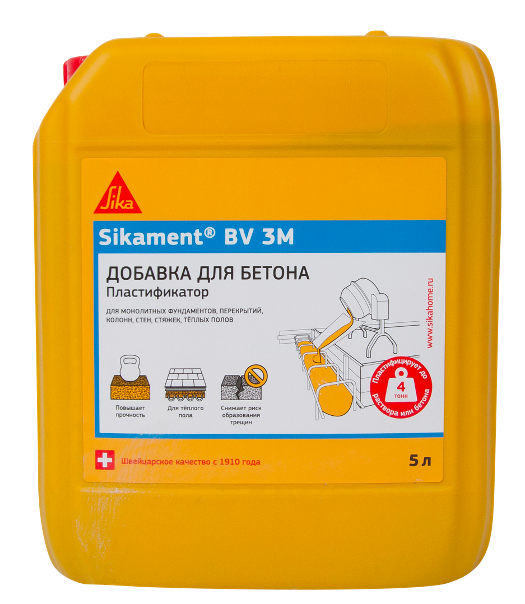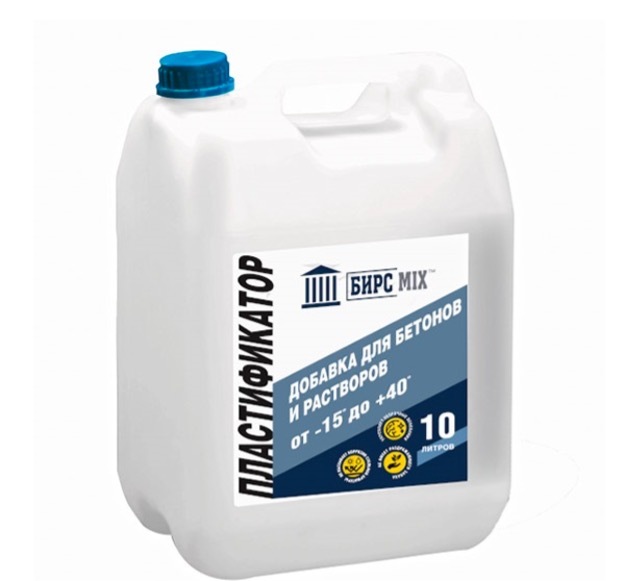One of the common questions builders have is why a plasticizer is needed for concrete. This is a special additive that improves the quality of the concrete mix, promotes its hardening even at low temperatures, prevents corrosion of reinforcement and other adverse processes. The purpose and consumption rate of such additives is described in detail in the presented material.
The content of the article
- The purpose of the plasticizer
- Plasticizer consumption
- Universal plasticizer
The purpose of the plasticizer
First of all, you need to understand what a plasticizer is for. It is a special additive based on an organic polymer or inorganic salt, which is always added to the concrete mix. The composition distinguishes several types:
- polymer-silicone;
- polycarboxylate;
- lignosulfonate;
- calcium and sodium nitrates.


We can say about the plasticizer that it is an organic or mineral substance that significantly improves the properties of concrete mixture, for example, eliminates air bubbles, promotes hardening, helps to prepare the solution even under conditions of negative temperatures.
The plasticizer is introduced into the composition to solve several problems:
- Increased fluidity (mobility) for more comfortable styling. This allows you to reduce the consumption of cement (by weight) up to 10-15%.
- Increase plasticity by removing air bubbles. This is how additives with hydrophobic properties work, due to which the water-repellent properties of the mixture increase.
- Stabilization of the solution, maintaining its homogeneity for several hours. Additives are necessary in order to be able to transport concrete mixtures over long distances.
- Another thing for which a plasticizer is needed in concrete is to reduce shrinkage time. During setting and hardening, the mixture loses volume and compacts. To make the process go faster, special additives are introduced that allow it to be accelerated by 2.5 times.
- Some types of additives increase the frost resistance of the mixture, which allows you to work even in the cold. For this, nitrogen compounds are used, for example, sodium nitrate or urea.
- Considering why a plasticizer is needed in a solution, it is necessary to mention the increase in strength and other quality indicators.
Plasticizer consumption
Many cement-sand mixtures already contain plasticizers in the right quantities. However, often builders prepare solutions on their own, so they need to correctly determine the consumption of the plasticizer. Specific values depend on the type of component, but in general, the share is about 0.3-1%, sometimes up to 4% of the mass of cement. Below are a few examples:
- "Superplast" - is used to improve the properties of concrete, the consumption is 0.2% of the total mass of cement. For example, for 10 kg of cement, 20 g of plasticizer should be taken.
- "Polyplast SP-1" is consumed in the amount of 0.5-1% of the cement.
- "LMS" - 0.1-0.3%.
- "Superplasticizer C-3" - 0.7%.
- "Mplus" - 1%.

As can be seen from the list, the consumption rate is determined in a certain range, i.e. a slight excess of the amount of plasticizer will not impair the quality of the concrete mixture. At the same time, it is not worth reducing the share, because otherwise the effect of the additive may be weakened.
Universal plasticizer
Different additives perform different functions, so sometimes the question arises of what to add to the screed for strength or better hardening. In order not to consider different components, you can stop at a universal plasticizer. It contains all the main substances to improve the properties of the concrete mixture and has several advantages:
- shrinkage reduction;
- crack prevention;
- reduction of cement consumption (by weight) by 8%;
- increase in strength up to 10-12%;
- reduction of water consumption up to 15%;
- acceleration of the hardening process in a wide temperature range from -15 to +40 ° C;
- prevents corrosion of steel reinforcement;
- does not have its own smell;
- characterized by fire safety.

Sometimes, instead of store-bought compounds, folk remedies are added to the mixture, for example, soap, liquid detergent, lime, silicate glue, and others. It is not recommended to resort to such measures, since the quality of the final result is not obvious, and the cost of an error increases. It is best to use a universal plasticizer, adding it when mixing the mixture strictly according to the instructions (average 1%).


